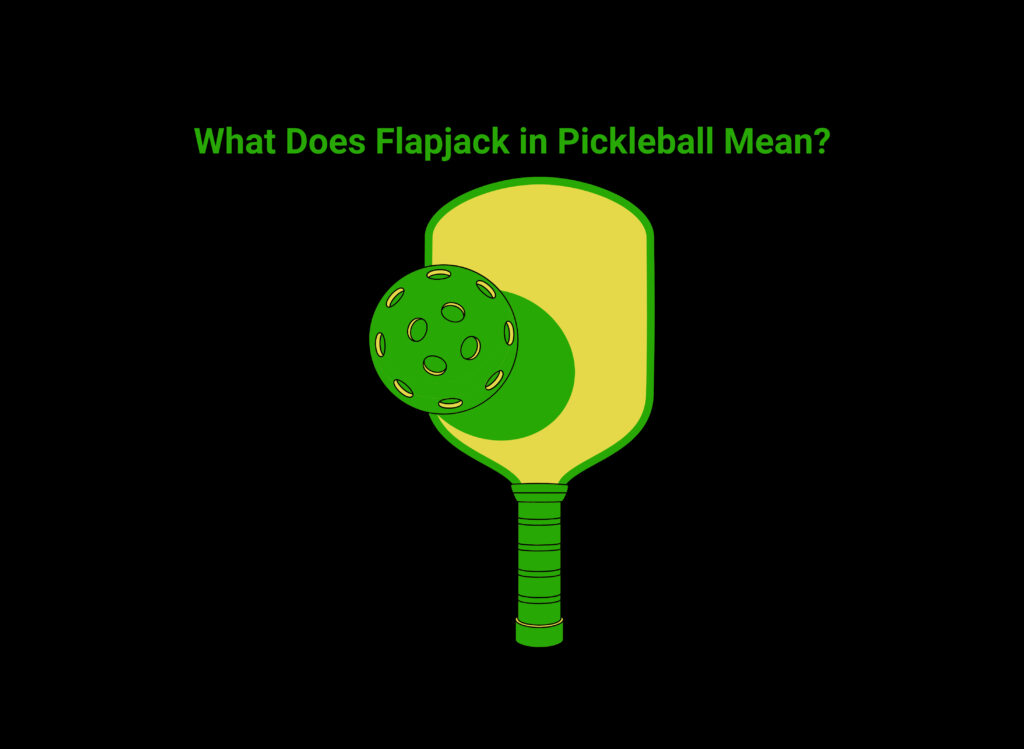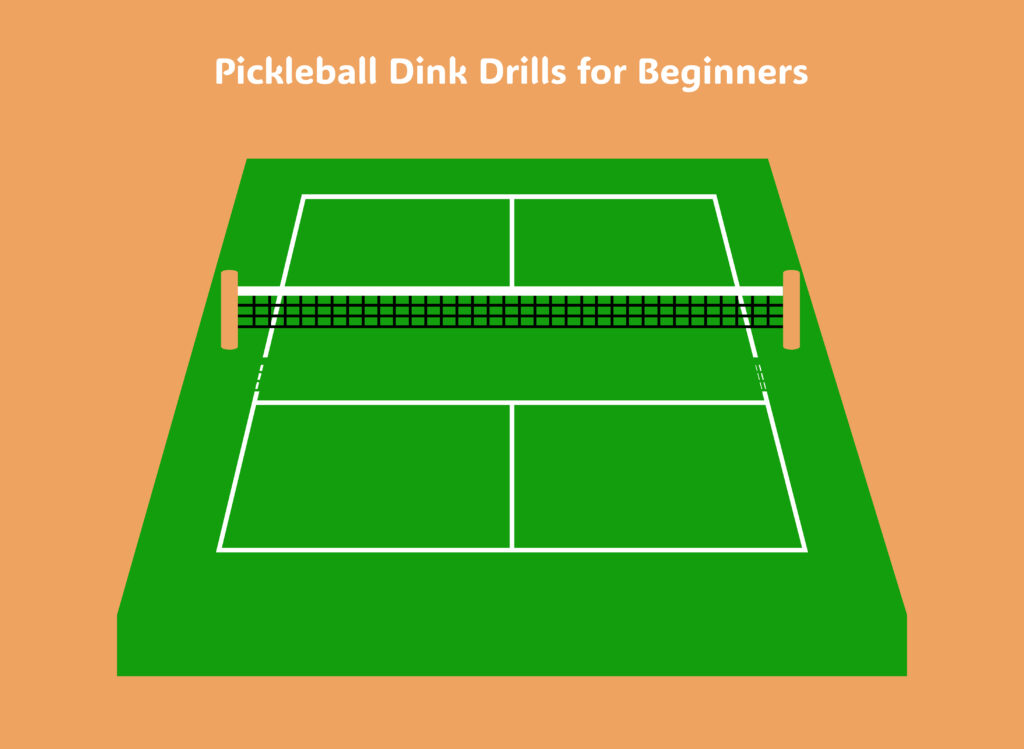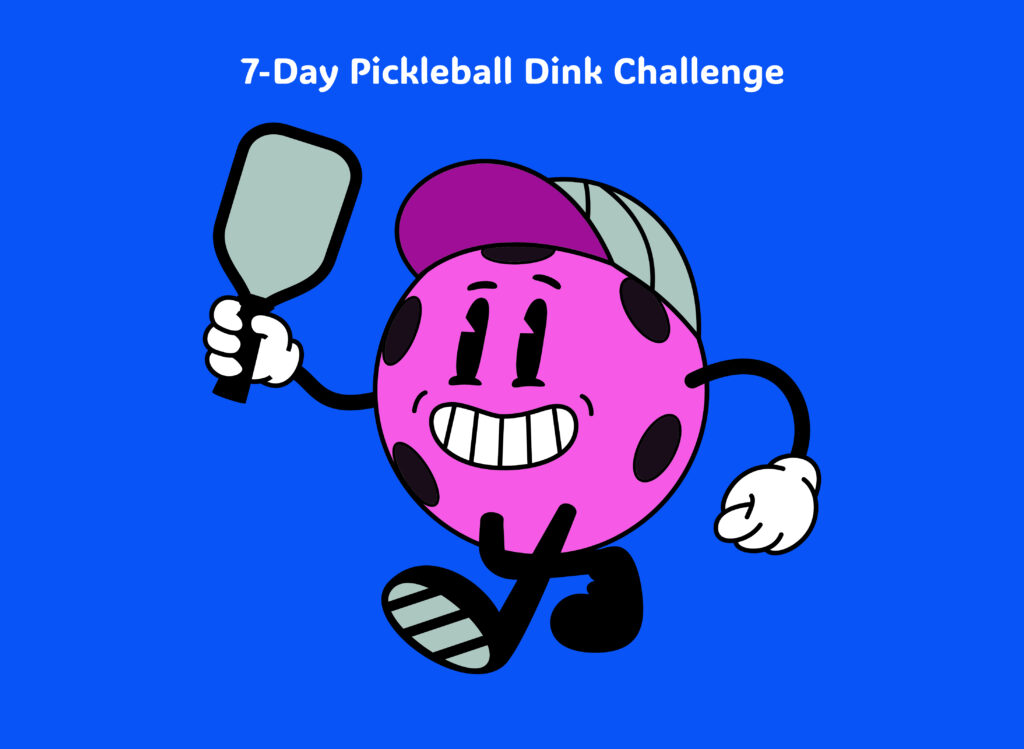- Flapjacks and the Two-Bounce Rule in Pickleball
- How Beginners Should Handle Flapjack Situations
- Intermediate Understanding: Using the Flapjack in Pickleball to Your Advantage
- Advanced Play: Mastering the Flapjack Phase
- Final Thoughts: The Flapjack in Pickleball UK Culture
Flapjack in pickleball is a term that has nothing to do with pancakes or post-game snacks—though you’d be forgiven for thinking so! Instead, it’s a quirky piece of early pickleball slang that refers to any shot that must be allowed to bounce before being returned. Most notably, it applies to the first two shots of every rally: the serve and the return of serve. According to the Two-Bounce Rule, the ball must bounce once on each side before players can start volleying.
So, when someone says, “That’s a flapjack,” what they mean is: don’t volley it! Let it bounce. The term isn’t as commonly used today as it once was, but it still pops up in more playful or vintage pickleball settings—particularly in clubs or among veteran players who enjoy keeping the lingo alive. It reflects the light-hearted, inclusive culture that has always been part of the game, especially in the UK where community play and friendly banter thrive.
While not an official term in the rulebook, understanding the flapjack helps players at every level grasp one of the game’s most essential rules, and adds a little fun to the process. For new players, it serves as a quirky reminder of an otherwise technical rule.
Flapjacks and the Two-Bounce Rule in Pickleball
The concept of the flapjack is directly tied to the Two-Bounce Rule—a foundational rule in pickleball that maintains fair play and keeps rallies balanced. Here’s how it works:
1️⃣ The serve must bounce once in the opponent’s service box.
2️⃣ The return of serve must also bounce once on the server’s side.
3️⃣ Only after these two bounces can players begin to volley (hit the ball out of the air).
The term “flapjack” cheekily refers to these first two shots—since you must “let them sit” before touching them, like a warm breakfast treat waiting to be flipped. The rule exists to prevent players from rushing the net too early and dominating rallies straight off the serve. It’s designed to extend rallies, create strategic depth, and allow both teams a fair chance to get into position.
In UK pickleball clubs—particularly where coaching is available—you’ll often hear players reminding each other, “Wait for the flapjack!” when someone gets overexcited and tries to volley the return. It’s a playful way of saying, “Hold your horses—let it bounce!”
🔥 Key takeaway: A flapjack is a fun way to remember that the serve and return must bounce—no volleys allowed until then.
How Beginners Should Handle Flapjack Situations
For new players, learning to wait for the ball to bounce can feel unnatural. Many instinctively want to volley the return or charge the net, especially if they’ve played tennis or other racquet sports. The flapjack concept simplifies this—if it’s one of the first two shots in the rally, just let it bounce.
Beginner Tips for Handling Flapjack Plays:
✅ Stay back after the serve – Don’t rush forward too early. Wait behind the baseline until after the return bounces.
✅ Anticipate the return – Be ready to move forward, but only once the ball has hit the ground.
✅ Watch your partner – In doubles, communicate who’s covering the return, and remind each other of the Two-Bounce Rule.
✅ Learn by repetition – Many beginner drills focus on these first few shots to build the habit.
In UK coaching sessions, the term “flapjack” is sometimes used as a training cue. Coaches will say, “Remember your flapjack!” to keep players from breaking the rule. It’s a friendly nudge that helps form good habits early, saving players from the embarrassment of an unintentional fault.
🔥 Key takeaway: For beginners, “flapjack” is a mental reminder to pause and wait for the bounce—essential for avoiding early faults.
Intermediate Understanding: Using the Flapjack in Pickleball to Your Advantage
Once players move into intermediate play, they not only obey the Two-Bounce Rule but also start to use it tactically. The flapjack becomes more than a rule—it’s a moment to set up the rally, assess your opponents’ positioning, and plan your next shot.
Ways intermediate players use the flapjack phase:
✔ Serve deep and to the corners to make the return harder and keep the opponent back.
✔ Return with depth and spin to prevent the serving team from rushing in quickly.
✔ Observe opponent movement after the return—many make the mistake of charging too early.
✔ Control the tempo – Slowing the serve or return can give you an extra second to reposition.
In UK league matches, understanding this phase is crucial. Most intermediate rallies are decided by who gains net control first—and the flapjack phase is where that begins. If you treat those first two bounces as setup shots, not throwaways, you’ll be better prepared to dictate the rally’s pace.
🔥 Key takeaway: At the intermediate level, the flapjack phase is a key opportunity to gain strategic control before volleys begin.
Advanced Play: Mastering the Flapjack Phase
At advanced levels, the flapjack rule becomes second nature, and players use it to create deliberate setups. The serve and return are no longer passive—they’re the opening move in a game of chess. These players understand that the rally begins before anyone has touched the ball.
How advanced players maximise the flapjack rule:
✔ Vary serve placement – Use angles, depth, and spin to control the opponent’s return positioning.
✔ Craft the return – Hit to the weaker player, or to a side that opens the court for your partner.
✔ Plan the third shot early – Before returning, advanced players are already thinking: drive or drop?
✔ Use deception – Slight changes in body language or paddle angle can mask your intent during the return phase.
In UK tournaments, high-level players win games not just with athleticism but by outthinking their opponents during the setup shots. They understand that if the flapjack phase is handled correctly, the rest of the rally often falls into place with less risk.
🔥 Key takeaway: For advanced players, flapjack shots are an opening strategy, not just a rule—used to control space, tempo, and pressure from the start.
Final Thoughts: The Flapjack in Pickleball UK Culture
While “flapjack” might sound like a joke to the uninitiated, it’s actually a clever, community-driven way to remember one of the most important rules in pickleball. It’s one of those rare bits of terminology that’s both fun and functional—true to the spirit of the sport.
Key Takeaways:
✔ A flapjack is any shot that must bounce before being returned—especially the serve and return.
✔ It’s tied to the Two-Bounce Rule, which promotes fair and strategic play.
✔ Beginners benefit from remembering “flapjack” to avoid early volley faults.
✔ Intermediate and advanced players use flapjack shots to set up rallies and gain court advantage.
✔ The term reflects the light-hearted, clever side of pickleball culture—especially in UK clubs where playful language is part of the experience.
👀 Enjoyed this read? Fancy levelling up your game even more? Keep reading Dink Quest for the best pickleball tips, drills, and news in the UK!
🎯 Check out these popular posts next:
📬 Subscribe to the Dink Quest newsletter to Stay in the Loop and be the first to get new blog posts, UK pickleball news, tips, player spotlights and exclusive offers
👉 Click here to subscribe now
Get discounts and exclusive offers for Paddles, clothing and accessories from our shop
We’ve got plenty more where that came from! Whether you’re working on your third shot drop, curious about dinking strategies, or just figuring out how to hold your paddle without it flying across the court we’ve got you covered.
👉 Keep reading, keep learning, and keep dinking smart. Let’s grow the game together, one dink at a time. 💚
See you on the court!
The Dinkquest Team UK 🏓



